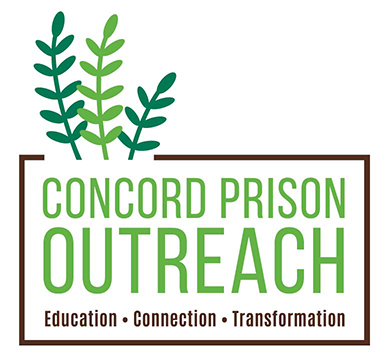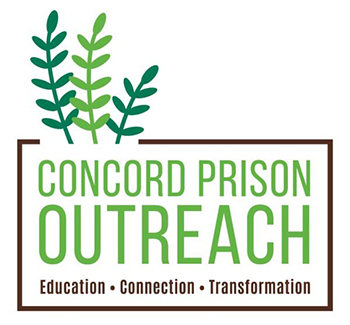“The Other Side of Hope” – with Sam Williams
Worship service at First Parish of Sudbury Unitarian Universalist
Sunday, April 13 with Mr. Sam Williams: “Other Side of Hope”
Transcript of Sam William’s “Message of Hope”
Good Morning my name is Sam Williams I’m the executive director for Conquered Prison Outreach, and I’m here to deliver a message of hope.
Today’s title is called The Other Side of Hope, and I want to begin by introducing a question to you — but a question that you don’t have to hold on to.
The question is: Is the immunity for social hope deteriorating around us?
Between 1997 and 2005, almost three decades, we’ve experienced mass shootings at churches, supermarkets, movie theaters, concerts, and schools. And then, shortly as we transitioned from that, we were impacted by COVID-19. Over a million people lost their lives. There was great social isolation, mass anxiety.
Then we transitioned straight into — and while at the same time — the police shootings and Black Lives Matter protests, a great deal of racial divide. And now we’re in this time of the presidential administration of 2025, where there is a lot of fear, threat, uncertainty, isolation, and even finger-pointing.
So one thought that came to my mind was: are we embracing a social condition of learned hopelessness? And I say that in relation to the sequence and the succession of what’s been happening to us as a society over the last three decades.
A couple of weeks ago we had our annual interfaith meeting at the Trinity Episcopal Church in Conquered. The theme for this meeting was Navigating Uncertain Times. We brought together our community partners, our faith-based partners, to really examine collectively as a community the challenges that we were facing today.
And I’ll kind of read some of those challenges just to uplift what we talked about. We talked about the government being in a political climate of confusion. The federal cuts. The tariffs. Wrongful deportation and mass deportation. The ICE raids. Federal workers are being laid off. DEI is under attack. Books and words are being banned. The elimination of the Department of Education.
In my mind, as I was thinking about all this, I thought, man, this is a transition period for the Earth. A lot of anxiety and depression. Increased mental health issues. Racial tension. The speed of technology is also playing a role. Climate change which is happening to us every day. Physical deterioration and misinformation.
And I lift that up because this gathering that we had — we gathered in the spirit of hope. We talked about how the impact of all those things that I just mentioned was manifesting in so many ways.
We also talked about what it means to resist. And we said that resisting can happen in a lot of different ways. It doesn’t have to be standing in front of… You know, a woman said she was protesting and they stood in front of a train. So it doesn’t have to be that type of resistance. What we did that day was resisting — coming together as a community, being together, and really talking about things that we knew were relevant and important, not just for us, but for the children today and for the generations to come.
We talked about belonging and how important belonging was in our lives — growing up in the different communities that we grew up in — and how belonging is so critical for today’s time and everything that we were talking about.
Then we did a reflection exercise, and I think this reflection exercise for me reminded me that hope was still alive in many ways. We talked about ways in which we can block and protect and collaborate. We talked about breaking — breaking in the sense of disrupting and shaking up. We talked about the importance of bridging and connecting and growing and building — deep structural change.
So these are all the different ways that, as we were in a spirit of hope and looking at and thinking about today’s time, we were together in spirit. I walked away from that gathering pretty touched and still in a deep state of reflection.
Because, you know, what we see daily is what’s really happening. And then I started to think about the work that I’ve been doing over the last six months in four different prisons. I run restorative justice circles.
The unique part of these experiences is that I’m in four different facilities that are very different in regards to the time in which men and women are spending. So as I was thinking about the conversation about navigating uncertain times, I want to share with you a little bit about five very extraordinary men that I’ve had the opportunity to be in circle with. I’ve given them fictitious names so that these are not their actual names.
Bill, within the last six months, was just released after spending 60 years in the Department of Correction — more than a half century of his life in the Department of Correction. Amazing.
Then Frank was also released after serving 45 years. He started his sentence in 1985 — and that was around the same time I started mine at the age of 19, so that time period is pretty special and memorable for me.
Then we have Tom, who was released after serving 42 years. And James, who was released after serving 37 years. And Mike, who was released after serving 32 years.
When you calculate all of those years, we’re talking about 217 years of incarceration.
And in many ways, as I engaged with these guys, they all told me in their own way that they were supposed to die in prison.
In my mind, as I was learning more about them, my question was: why didn’t you stop believing when you couldn’t see the path ahead?
As I continued to ponder and think about these guys, my takeaway was that even in the darkest places of life, people can still learn optimism. And I would believe that prison is a very dark place in life. Even in the darkest places in life, we can still learn optimism.
And I thought about that because, as I mentioned earlier, if the 30 years of what we’ve been seeing socially is teaching us to learn helplessness, I can truly understand that you can also learn optimism.
One of the things I came up with from that process is: they decided they couldn’t quit. They decided they couldn’t lose hope for a better outcome.
And as you know, I’m working with these guys — they’re real human beings with real anxieties and emotions and feelings. I was wrestling with the reality of being in spaces with them and the reality of all the things I talked about earlier — and what’s happening in the world.
They are coming into the things that are happening in the world — in a lot of ways, blindsided. Especially if you’ve been gone three, four, five, six decades.
And so I started to think to myself: then what is hope? What does it really look like and feel like if that is true?
Here are some thoughts that I came up with:
I know that for some people, hope is non-visible. But for others, it is visible.
I know for some people, hope is about intuition, energy, and spirit.
Hope has its own language.
It transcends race, culture, tribe, clan, political positions.
I believe that hope is an inner confirmation that we are okay.
It’s like that little voice inside of us that reminds us to keep going, to keep searching, to keep giving, to keep loving, to keep pushing.
Kind of like that little voice I believe was in those five men that says: Don’t give up regardless of how dark the circumstances might look today.
Hope is instinctual. It’s a natural power that we all have access to.
So it transcends human language, human conditions, social emotional status, academic accomplishments, and professional titles.
Hope is a compass.
A guide.
An instructor of all of our senses.
Hope is our voice of reason that transcends doubt.
So as I was grappling with all of these things — both the outside world and the inside world of prison — I kept trying to understand: What is on the other side of hope?
Here are some thoughts I came up with that I hope are applicable to your vision of hope:
- On the other side of hope is that we all belong on this Earth together.
- We all count.
- The human value that we each carry is much greater than the material and physical things we sometimes hold onto.
- We are worthy.
One of the most beautiful principles of the Unitarian Universalist Church that I’ve spent a lot of time in over the years is that this work is for the worth and dignity of every human being.
When I first came in contact with the UU church in Roxbury and read that principle, I felt like I counted. I felt like I was welcomed. I knew I was where I was supposed to be.
- We are whole.
- Wholeness doesn’t always have to be about the physical, material, structural things around us.
- We are connected — through community, family, love, congregations, events, activities.
- We are one — with the universe, with the Earth, with every living organism on this planet.
- We are enough.
I — and you — are in control of ourselves.
The Serenity Prayer says:
God, grant us the serenity to accept the things we cannot change,
the courage to change the things we can,
and the wisdom to know the difference.
That prayer has helped me for so many years come through the things I’ve come through.
I realize there are some things I just can’t control — but that which I can: my mind, my behavior, my discipline, my attitude, my energy — that’s where I put my effort and my work.
Hope, on the other side, means that I — and you too — are lovable.
- We, as individuals and as a collective, are a gift to others.
- We are a good message — in the way we live, in the way we treat each other, and in how we treat the Earth.
The other side of hope also says: I am human.
I am woman.
I want to say that again — particularly because of the history of patriarchy in this world —
I am woman.
I am man, too, in the manifestation of who I am.
I am us.
I am hope.
You are hope.
We are hope.
Together.
Thank you.

